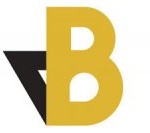 The afternoon session kicked off with Scott Prindle (@prindlescott) VP Creative technology at CP&B giving us real insight into the development of technology within the agency and the appearance (and importance) of the creative technologist.
The afternoon session kicked off with Scott Prindle (@prindlescott) VP Creative technology at CP&B giving us real insight into the development of technology within the agency and the appearance (and importance) of the creative technologist.
He told us that now at CP&B, 1/3 of their digital work is on mobile and them proportion is growing; alongside this they have an expanding html 5 practice to compensate for the no flash on Apple situation.
He talked about the role of the creative technologist and his position in the new team which is made up of:
- Copywriter
- Interactive Creative
- Creative Technologist
- UX/IA
- Producer
Today we making brand investments, things that live beyond campaigns and the creative technologist has different roles to play:
- Introducing new & emerging technologies
- Managing the complexity in an expanding digital ecosystem
- Building early prototypes
- Sparking ideas and creative thinking
He recommends to include technologists on the leadership creative team, across the full project lifecycle and to hire technologists who can communicate. Along with this it is important to differentiate between technology and TV, the process takes time and QA is vital – we need to develop more respect for the complexity.
In terms of project process, he talked about agile vs waterfall, but reminded us that within the creative environment, agile is the norm and developers need to understand that.
Finally the last speaker was Griffin Farley (@griffinfarley), Strategy Director at BBH New York
He talked about how connection planning has been around since 1999 and there was a need for something new, the next theory in account planning is propagation planning. The Blair Witch Project in 1999 really changed the way that we look at marketing success through digital and WOM.
Where account planning was there to inspire better creative thinking, and
Connection planning to inspire better media thinking,
Propagation planning is to inspire better WOM/social thinking.
Plan not for the people you reach, but the people they reach.
Propagation planning is about rethinking:
1) Audience
The auudience reacts best when they can see each other react and we must start with innovators/influencers
2) Timing
Start small and don’t blow it all in first week; it takes longer than a traditional campaign, and we need to choreograph and trickle out content
3) Deliverables
Build a detailed propagation plan including data for relevance, distinction between owned, paid and earned media, the full customer journey and the comms tasks for each channel. They use the inverted funnel for early adopters, the traditional funnel for mass audience and finally the inverted funnel again for advocates.
Finally he talked about measurement using the net promoter score, which is on average 23% for a brand (he warned that brands starting with a negative NPS, might best avoid social campaigns which could turn against them). The new propagation brief and be wary of buying fans.


1 comment